Kayaking might be one of the most flexible watersports in the world — well, as flexible as you can get with a 10-foot-long hunk of fiberglass involved, that is. From calm afternoon paddles on a lake to a multi-day camping trip down an exhilarating river to mind-blowing sea adventures, kayaking can be enjoyed by folks of all skill levels in diverse settings.
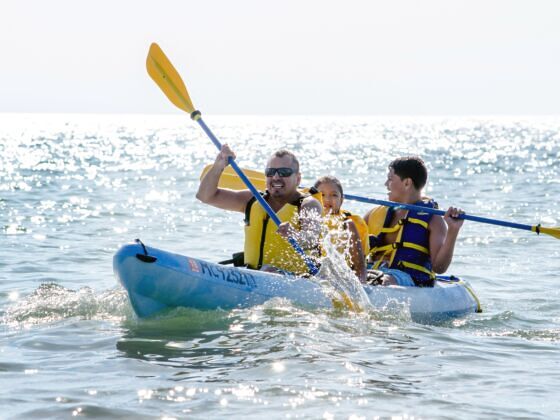

Of course, any Michigander will tell you that kayaking in Michigan is the best. I mean, 3200 miles of coastline? No corrosive saltwater? Perhaps even the bonus of a beach to relax on following a hard paddle session? Yes, please.
A note before we get started: If you’re on one of the Great Lakes, as opposed to an inland lake, congratulations – you are sea kayaking. Yes, it’s still a lake. Stick with me. If you’re not from Michigan or the surrounds, you’re going to have to adjust your expectations of a “lake.” The waves can be treacherous, and the weather unpredictable. The open lake is not for novices or those unfamiliar with Michigan conditions. You’ll want to consider channel and river paths that lead to the lakes, inlets, and harbors that are calmer than the open water, and guided tours from folks who know exactly what they’re doing. The grand scale of the Great Lakes keeps them chilly all year long, so don’t be surprised if your local outfitter suggests a wet suit.
None of that should suggest that Michigan’s inland lakes and rivers are a consolation prize. In addition to the Great Lakes, Michigan offers over 11,000 inland lakes and 300 rivers to explore by kayak. Many are glacier-formed, meaning they’re stunning clear and blue; they also warm up towards the middle and end of summer. Others boast surprises like sandbars, impressive fishing, and swimming beaches.
If you’re unsure of your own capabilities, err on the side of caution and ask for guidance — kayaking is a fairly welcoming pastime, but accidents can happen to anyone. Whether you’re a pro or brand-new to kayaking in Michigan, these locations will get you excited to hit the water.
Western Michigan
Lake Michigan is the second-largest of the Great Lakes but ranks first in my heart. Visit the beaches in this area and you’ll be treated to world-famous Michigan “sugar sand” — exquisitely fine sand that feels almost unreal. Many towns along the lake pop fully to life in the summer months — if you’re planning a trip to the area, you’ll want to book your logistics ahead of time to make sure you don’t get squeezed out.
Mona Lake, Muskegon
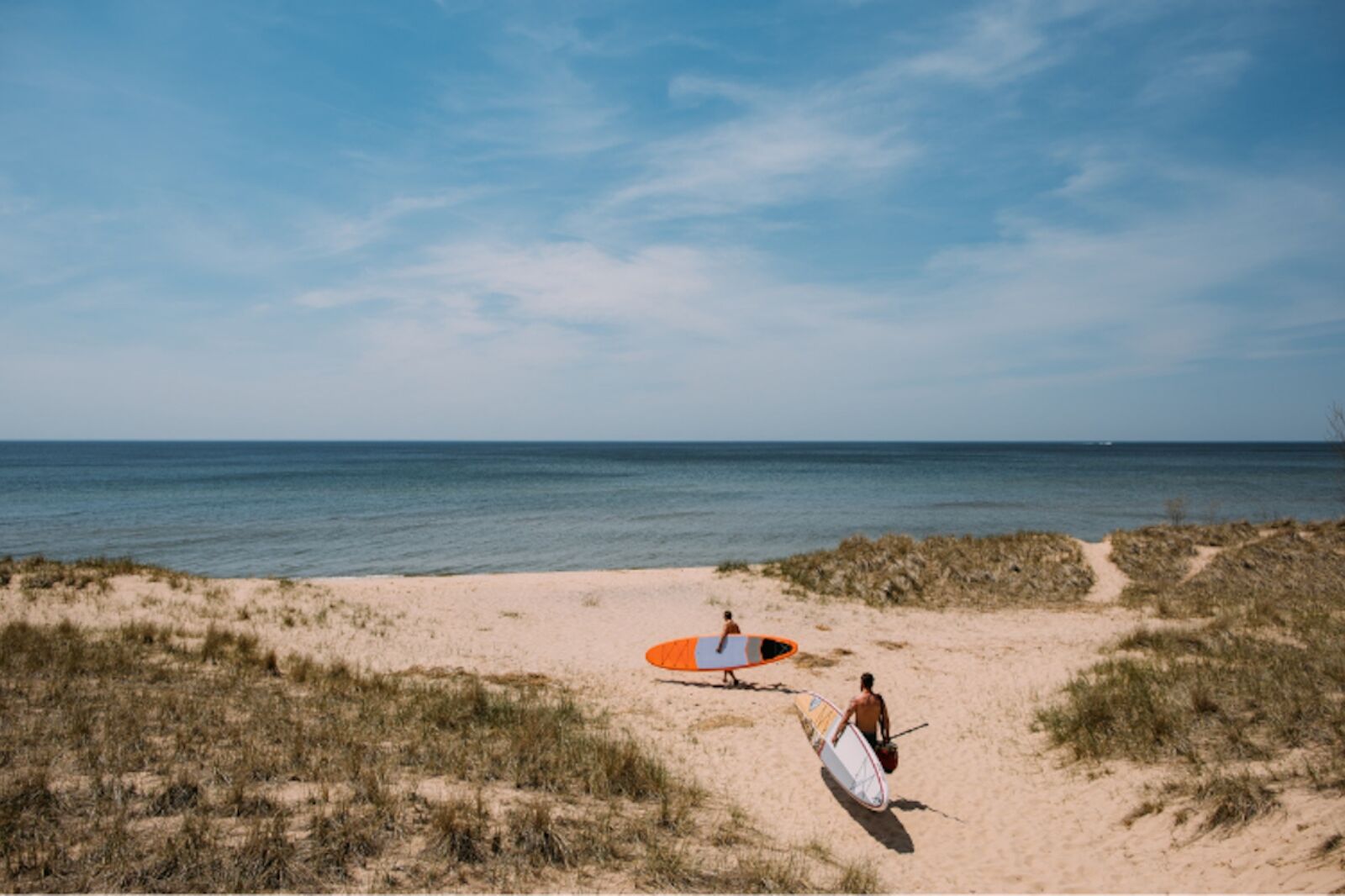
Photo:
The West Michigan Water Trail offers many great options for exploring Lake Michigan — to enjoy a simple kayaking trip, beach, and even fishing, start out in the Mona Lake Loop. The park features a popular swimming beach (the shallow depths mean Mona is one of the warmest lakes in the area). Nearby Muskegon Lake is a good next-step kayaking destination — Snug Harbor is calm and features swimming beaches and hiking trails as well. Both bodies of water open out to Lake Michigan, but rapidly changing weather and hefty waves mean it’s best to leave that adventure to experienced kayakers.
Warren Dunes State Park, Sawyer

Photo: Susan B Sheldon/Shutterstock
With three miles of sandy shoreline, 240-foot tall sand dunes, and just a 90-minute drive from Chicago, Warren State is popular for all the right reasons. Visit Third Coast Paddling for kayak rentals; if you can’t get enough of the beach, maybe sandboarding should be on your itinerary as well.
Central and Southeast Michigan
This part of Michigan is often characterized by its cities (Detroit, Ann Arbor, Lansing) and college rivalries (go Spartans), but that doesn’t mean it’s lacking in opportunities to get out and paddle. Since this is an urban and highly industrialized area, it’s important to stay up-to-date on any city announcements regarding possible pollution or unsafe conditions and adjust your plans accordingly. Oh, and leave your daydreams of kayaking to Canada out of the plans — while you can freely cross international waters, you’ll violate international law the moment you touch land, even if it’s just with a paddle.
Seven Lakes State Park
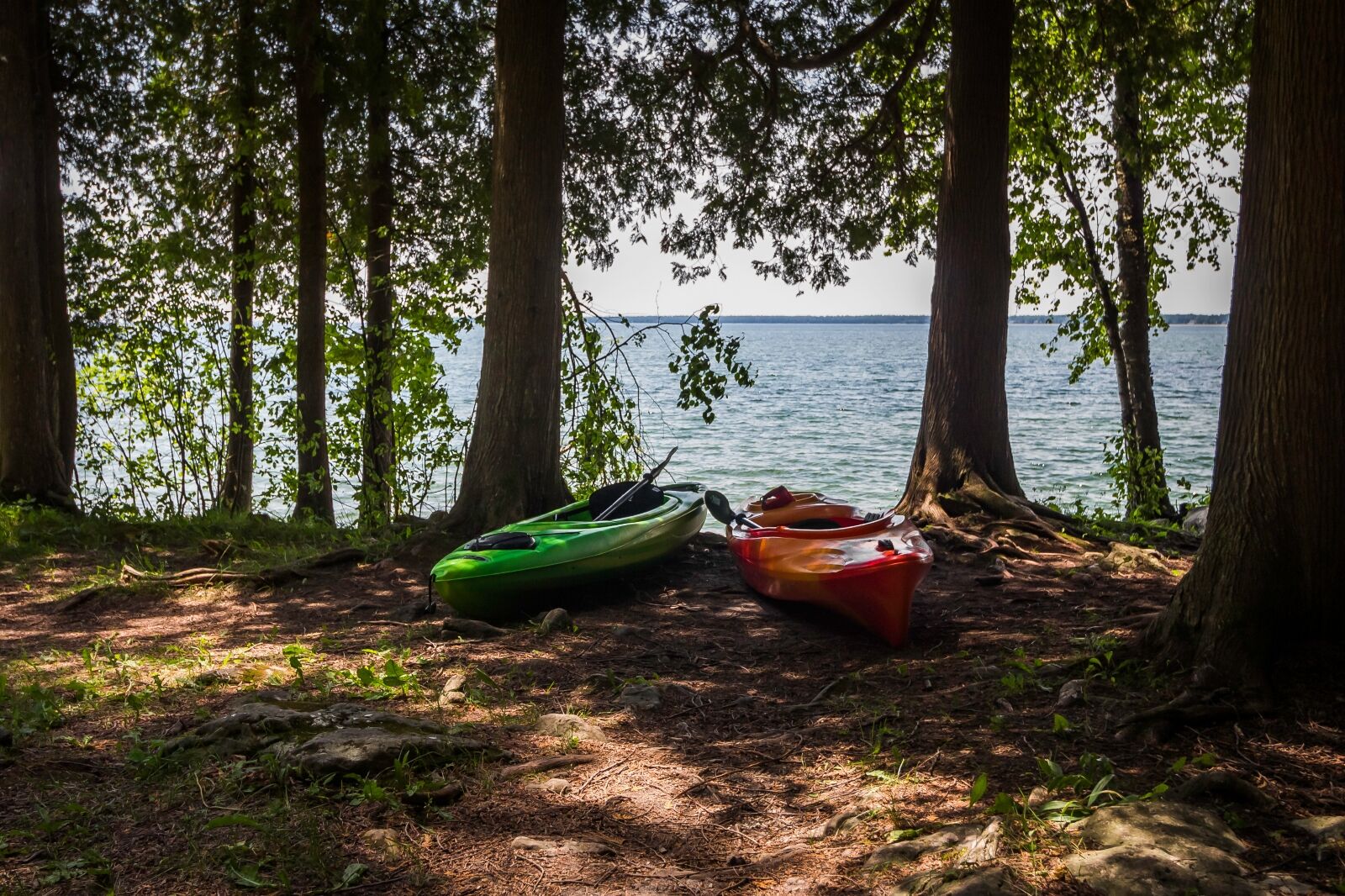
Photo: Gottography/Shutterstock
Get you a park that does it all. Seven Lakes is a popular fishing, hiking, camping, and swimming location just an hour northwest of Detroit. You can bring your own kayak or rent them from the registration office, open between Memorial Day and Labor Day. To enjoy sandy swimming beaches immediately before or after your kayaking trip, head to the largest lake in the park, aptly named Big Seven Lake. While lake conditions are always subject to change, Big Seven is calm because of its inland setting, making this a great option for beginners and families. Don’t forget that you’ll need to purchase a Recreation Passport to enjoy Michigan’s state recreation areas.
Belle River

Photo: backpacker79/Shutterstock
The 7.5-mile water trail along Belle River takes you from East China Township to the St. Clair River. While it’s a smooth ride, the river is heavily wooded — meaning you’ll occasionally come across a tree in the water. Nearby Marine City Beach offers a chance to relax on the sand — but it’s only open during the summer. For rentals throughout the area, visit Simple Adventures.
Eastern Michigan
The “thumb” offers unique kayaking on Lake Huron, especially for fans of geology. As always, carefully check the weather before starting any trip, and be prepared with backup plans.
Port Austin
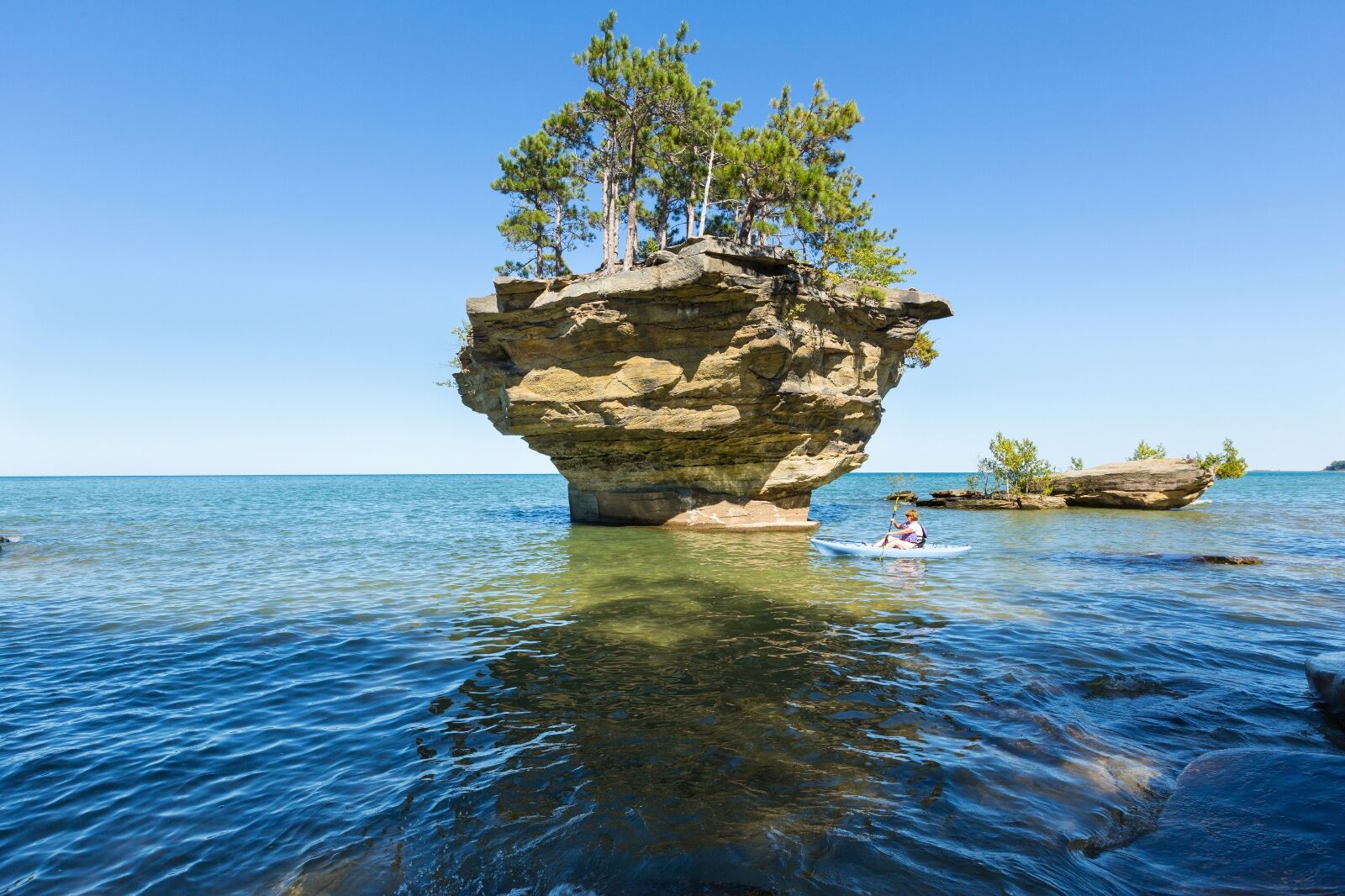
Photo: Craig Sterken/Shutterstock
If you’ve been looking for kayaking spots or just scrolling around Instagram, you may have already seen pictures of Turnip Rock. Turnip Rock is an aptly named geographical formation — aka a giant inverted pyramid of rocks jutting out of the lake. The water around Turnip Rock is shallow enough to shore to paddle and wade in — however, the rock is technically on private land, so you can’t explore the actual “turnip.” You’re welcome to perch your kayak on the shore for a quick break, but please be respectful and clean up after yourself. Water shoes are highly recommended. Bird Creek is the most popular spot to start the seven-mile paddle, but if you’re looking to launch from a sandy beach, try Veteran’s Waterfront Park.
Broken Rocks Trail
Turnip Rock gets pretty crowded in the summer months, but there are plenty of other very cool rock formations in Port Austin to explore. Launching again from the wide beach at Veteran’s Park, steer your kayak in the opposite direction to explore Broken Rocks Trail, a great beginner option. At around two hours, Broken Rocks will take you along the relatively calm western shore of Port Austin, past sea caves, cliffs, and boulders, ending at Table Rock. Unlike Turnip Rock, Table Rock is public land, making it the perfect place to enjoy a mid-paddle picnic.
Port Austin Kayak will help you with rentals, directions, and launching for either option and also offers a two-mile out-and-back trail to Port Austin Reef Light — an experience strictly for seasoned kayakers.
Harbor Beach
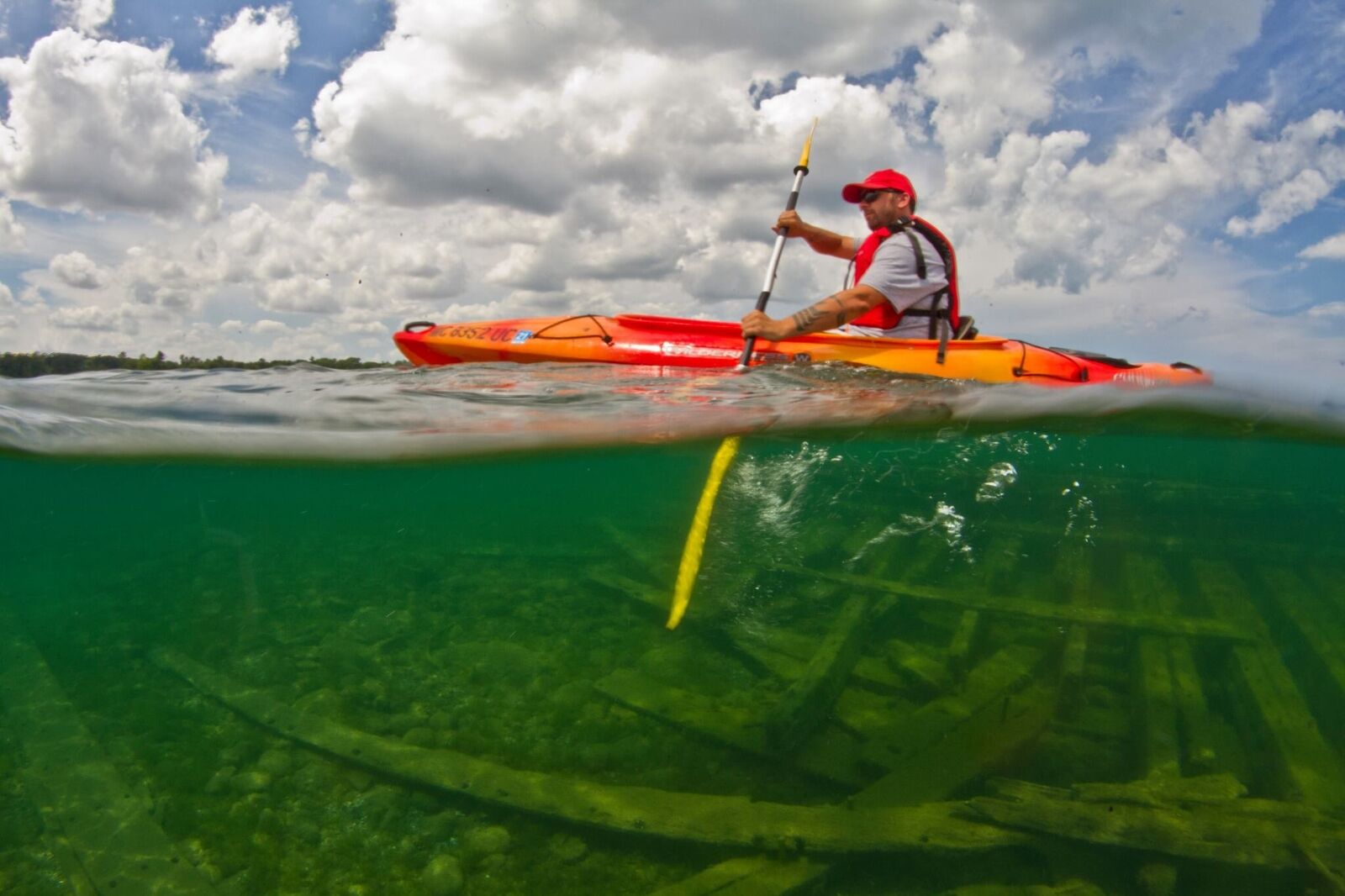
Photo: Harbor Beach Kayak
About 30 minutes southwest of Port Austin, you’ll find Harbor Beach, conveniently serviced by Harbor Beach Kayak. Launch at Lincoln Park to enjoy a sandy swimming beach; in this area, the waters are relatively calm and protected by the harbor. The Harbor Beach Lighthouse is charming to paddle past, but the real treat in this kayaking spot are the three well-preserved shipwrecks just a short distance from shore. The Dorcas Pendell, John Wesley, and George H. Waud were all sunk after running aground in the harbor between 1902 and 1914. All three are wooden schooners in various states of wear and are quite visible from the surface, depending on how calm the waters are.
Northern Michigan
This part of Michigan offers gorgeous opportunities to explore both Lake Michigan and Lake Huron. Nature up here is wilder and rougher than down south, but immensely rewarding. The Great Lakes can be cold and choppy up here, so take caution when preparing for a trip — always check the weather reports, be aware of emergency ports, and notify a friend of your kayaking plans. The multiple inland lakes and harbors in northern Michigan offer calmer (and warmer) waters without sacrificing the beauty.
Torch Lake
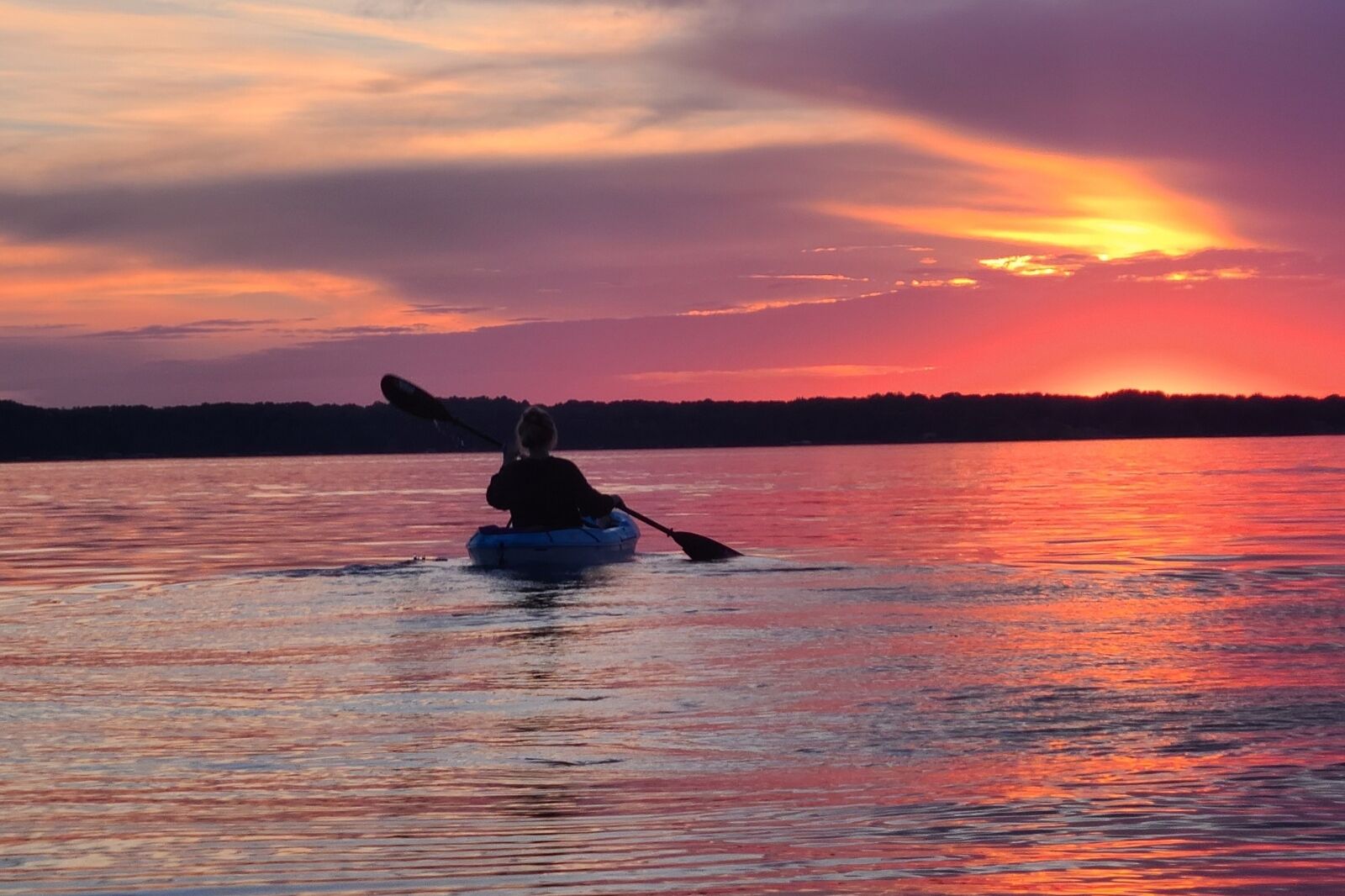
Photo: BeccasDigital/Shutterstock
Running parallel to the eastern shore of Grand Traverse Bay, Torch Lake packs in a lot of surprises. A long, skinny body of water, Torch Lake, is the deepest and the longest inland lake in Michigan. Formed by melting glaciers, the water is a stunningly clear turquoise color. Many beaches up north are rocky, not sandy, but you can find a launch spot and a sandy beach at Torch Lake Township Day Park. The lake also boasts a two-mile-long sandbar that’s a popular party spot in the summer — it’s a quintessential #lakelife destination perfect for hopping out of your boat and enjoying a cool drink with the sand between your toes. Torch Lake can get crowded in the summer months, you’ll want to secure your rental equipment or tours early. Luckily, there is no shortage of watersports shops, and there are plenty of public access launch sites to explore. Torch Lake Tiki offers day rentals and guided tours, including a new Twilight Tour of the sandbar. If the thought of a glass-bottomed kayak intrigues you, check our Clear Water Kayaks. Riverside Marina offers a budget-friendly option, while Luhrs Landing Marina lets you reserve a kayak (or pontoon) online. Don’t confuse this with Torch Lake in Houghton County on the Keweenaw Peninsula.
Sleeping Bear Dunes

Photo: Bo Shen/Shutterstock
Like a landscape out of a sci-fi movie, Sleeping Bear Dunes National Lakeshore stretches 35 miles along Lake Michigan. While there are several great inland lakes to explore in the dunes, the “big lake” is definitely the star of the show — though Lake Michigan’s unpredictable weather and substantial waves mean it will not be for everyone. The park offers miles of beaches — Platte River Point is a popular spot where you can enjoy the beach and launch a kayak into Lake Michigan, powered by the river quickly coursing. You can rent sea kayaks from Sleeping Bear Surf for the day; Crystal River Outfitters is located with the lakeshore itself and offers rentals and family-friendly trips along the Crystal River.
The Upper Peninsula
Of the Great Lakes, Superior is considered the most tempestuous, and the Upper Peninsula is rugged and remote. While kayaking in this area is likely to be highly rewarding, it should be undertaken with great care. Layers are vital to staying comfortable and dry, as chilly temperatures and unpredictable winds can appear at any time of year. Some outfitters will strongly recommend or require dry suits, and kayakers should be aware of the signs of hypothermia. While there are lovely sandy beaches to be found in the UP, just as in Northern Michigan, much of the shoreline is rocky beach or craggy cliffs.
Grand Island
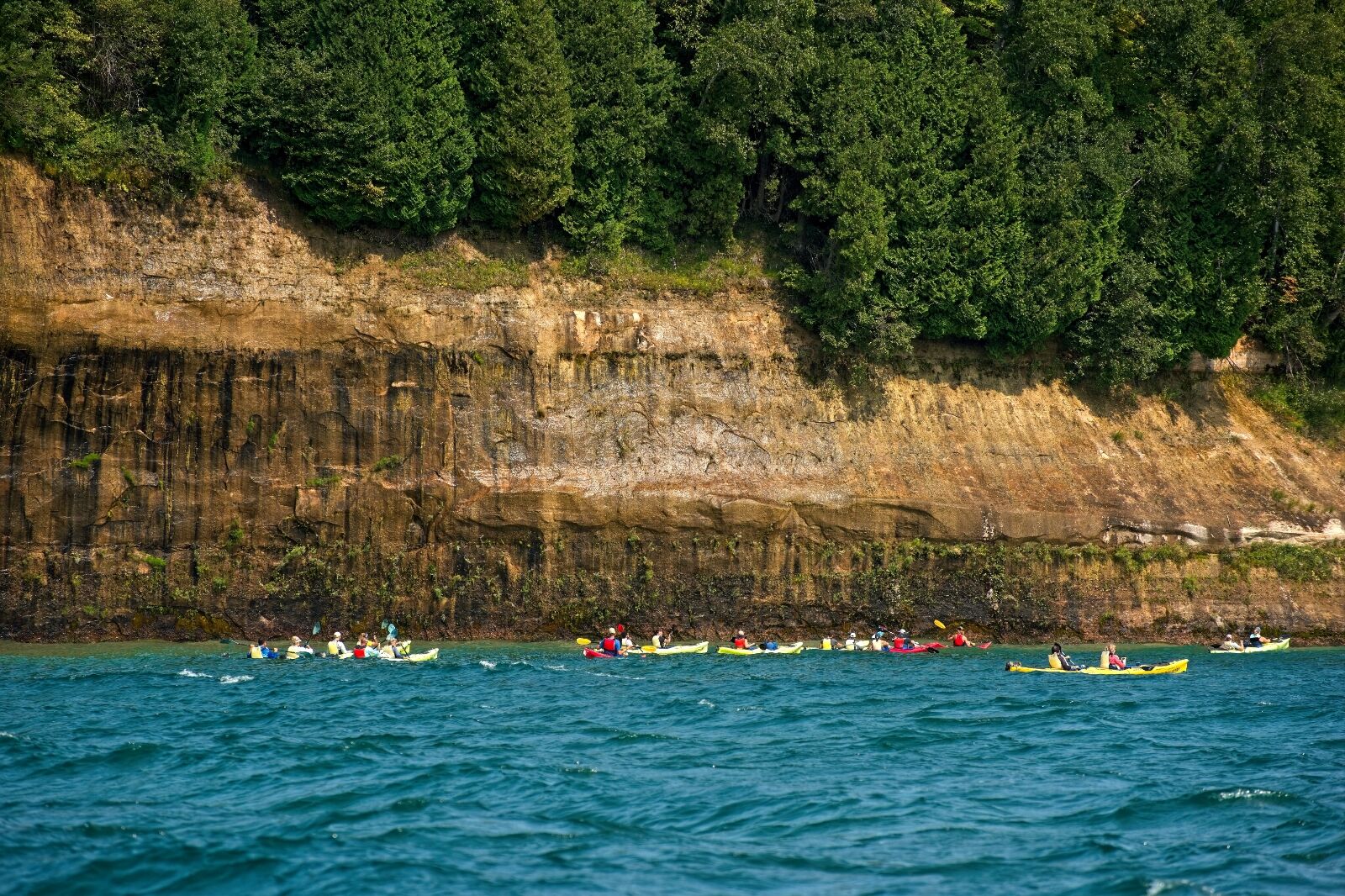
Photo: Kenneth Sponsler/Shutterstock
Grand Island is just offshore of Munising on the Upper Peninsula. While most folks go through Munising on their way to the highly celebrated Pictured Rocks National Lakeshore, the waters around Grand Island and between Christmas on the west and Sand Point Beach on the east offer plenty to explore. Sheltered Murray Bay features the wreck of the Bermuda, a schooner that sank in 1870 and now rests just 12 feet below the water’s surface. An incredibly well-preserved wreck, it’s popular with snorkelers, divers, and boaters. Launching from Sand Point Beach on the mainland will treat you to wide and quiet sandy beaches, situate you right across the water from East Channel Lighthouse, and can serve as an entry point to the series of beaches running to the northeast into Pictured Rocks. Superior Kayaking offers a nine-mile guided tour along Grand Island including gorgeously secluded Mather Beach.
Keweenaw Water Trail
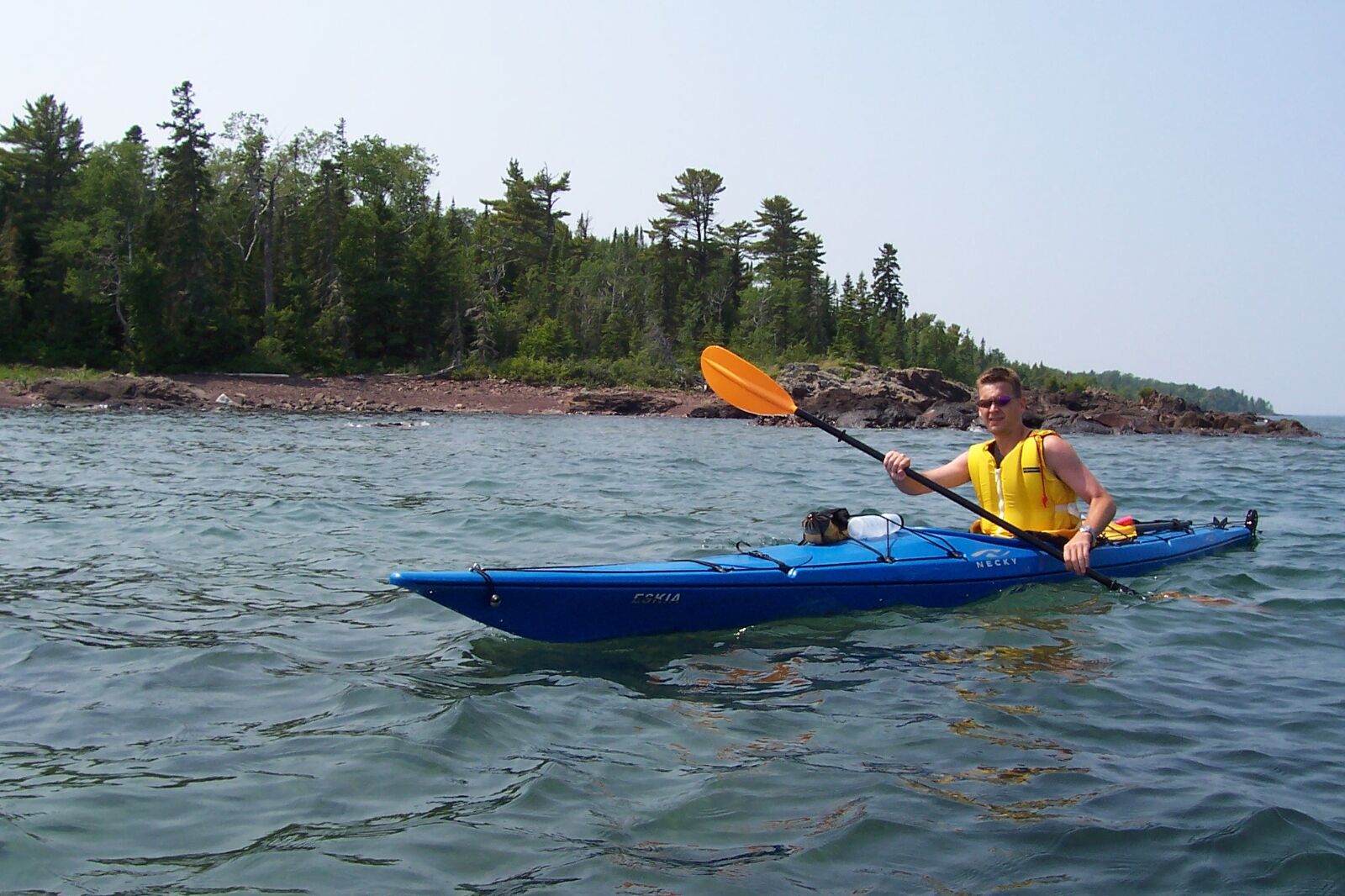
Photo: Keweenaw Adventure
You’ll likely want to join a guided tour to get the most out of this area. A notable trip is around the Keweenaw Peninsula. You can complete the full 100-mile loop through inland Portage Lake and around the tip of the peninsula in six to eight days or break up the trail into day trips. With either option, you’ll get to experience the wild beauty of the undeveloped northern shoreline, dramatic geological formations, and rocky beaches. Keweenaw Adventures offers professionally guided sea kayak tours and overnight trips as well as outfitting, basic instruction, and a three-hour Fundamental of Water Safety course (required for anyone hoping to rent their equipment for a self-guided tour). To enjoy sandy beaches, choose a tour starting at Bete Grise, like the Montreal Falls Kayaking tour. For a totally different water experience that’s great for beginners, the Bete Grise tour will take you from sandy beaches to a thriving marshland that’s sheltered from the waves and winds of Superior.